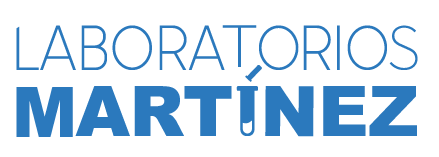The advent of blockchain technology has revolutionized various industries, including finance, supply chain management, healthcare, and entertainment. One area where blockchain shows great promise is digital rights management (DRM). As the digital content landscape continues to evolve and expand, the need for a secure, transparent, and efficient system to manage intellectual property rights becomes increasingly pressing. Blockchain offers a decentralized and immutable solution to address the challenges faced by content creators, distributors, and consumers in the digital economy.
Digital rights management involves the protection, licensing, and distribution of digital content such as music, movies, ebooks, and software. These digital assets are susceptible to piracy, unauthorized distribution, and copyright infringement, which can lead to revenue loss for content creators and rights holders. Traditional DRM systems rely on centralized servers and intermediaries to manage rights and permissions, which can be vulnerable to hacking, censorship, and data breaches. Blockchain technology offers a decentralized alternative that eliminates single points of failure and provides greater security, transparency, and accountability.
Blockchain is a distributed ledger technology that enables peer-to-peer transactions without the need for intermediaries. Each block in the blockchain contains a record of transactions that are cryptographically linked to previous blocks, creating a secure and tamper-proof chain of data. This decentralized and immutable nature of blockchain ensures that digital assets and transactions are securely recorded and verified by all participants in the network. By leveraging blockchain for DRM, content creators can establish unique digital identities for their assets, track their usage and ownership, and enforce licensing rights in a Crypto Leap Pro transparent and automated manner.
One of the key benefits of using blockchain for DRM is the ability to create smart contracts. Smart contracts are self-executing agreements that are encoded on the blockchain and automatically enforce the terms and conditions of a contract without the need for intermediaries. Content creators can use smart contracts to define licensing agreements, royalties, and usage rights for their digital content, ensuring that payments are made to the right holders in a timely and transparent manner. Smart contracts also enable automated royalty distribution, real-time tracking of content consumption, and instant verification of copyright ownership.
In addition to smart contracts, blockchain technology can enhance the transparency and traceability of digital content. Each digital asset stored on the blockchain is assigned a unique cryptographic hash that serves as a digital fingerprint, allowing content creators to verify the authenticity and integrity of their assets. Blockchain can also track the provenance of digital content from creation to distribution, providing a transparent audit trail of rights and permissions. This increased transparency and traceability can help prevent piracy, unauthorized use, and copyright infringement, benefiting both content creators and consumers.
Furthermore, blockchain technology can streamline the licensing and distribution process for digital content. By leveraging blockchain, content creators can automate the verification of licenses, payments, and usage rights, reducing the administrative burden and costs associated with traditional DRM systems. Blockchain can also enable micropayments for content consumption, allowing consumers to pay for digital content on a per-use basis or through subscription models. This flexibility and efficiency in licensing and distribution can help content creators reach a wider audience, generate more revenue, and foster a more sustainable digital economy.
Moreover, blockchain technology can empower content creators and rights holders to monetize their digital assets more effectively. By tokenizing digital content on the blockchain, content creators can create unique digital tokens that represent ownership rights, usage rights, or access rights to their content. These digital tokens can be bought, sold, and traded on decentralized marketplaces, providing content creators with new revenue streams and monetization opportunities. Blockchain also enables the fractional ownership and crowdfunding of digital content, allowing fans and investors to support their favorite creators and share in the success of their work.
In conclusion, blockchain technology holds great promise for revolutionizing digital rights management in the digital economy. By offering a decentralized, secure, and transparent solution for managing intellectual property rights, blockchain can empower content creators, distributors, and consumers to protect, license, and monetize digital content more effectively. With the adoption of blockchain for DRM, the future of digital content looks promising, with increased security, efficiency, and innovation in the way content is created, distributed, and consumed. As investors and stakeholders continue to recognize the potential of blockchain for DRM, the digital rights management industry is poised for significant growth and disruption in the years to come.


